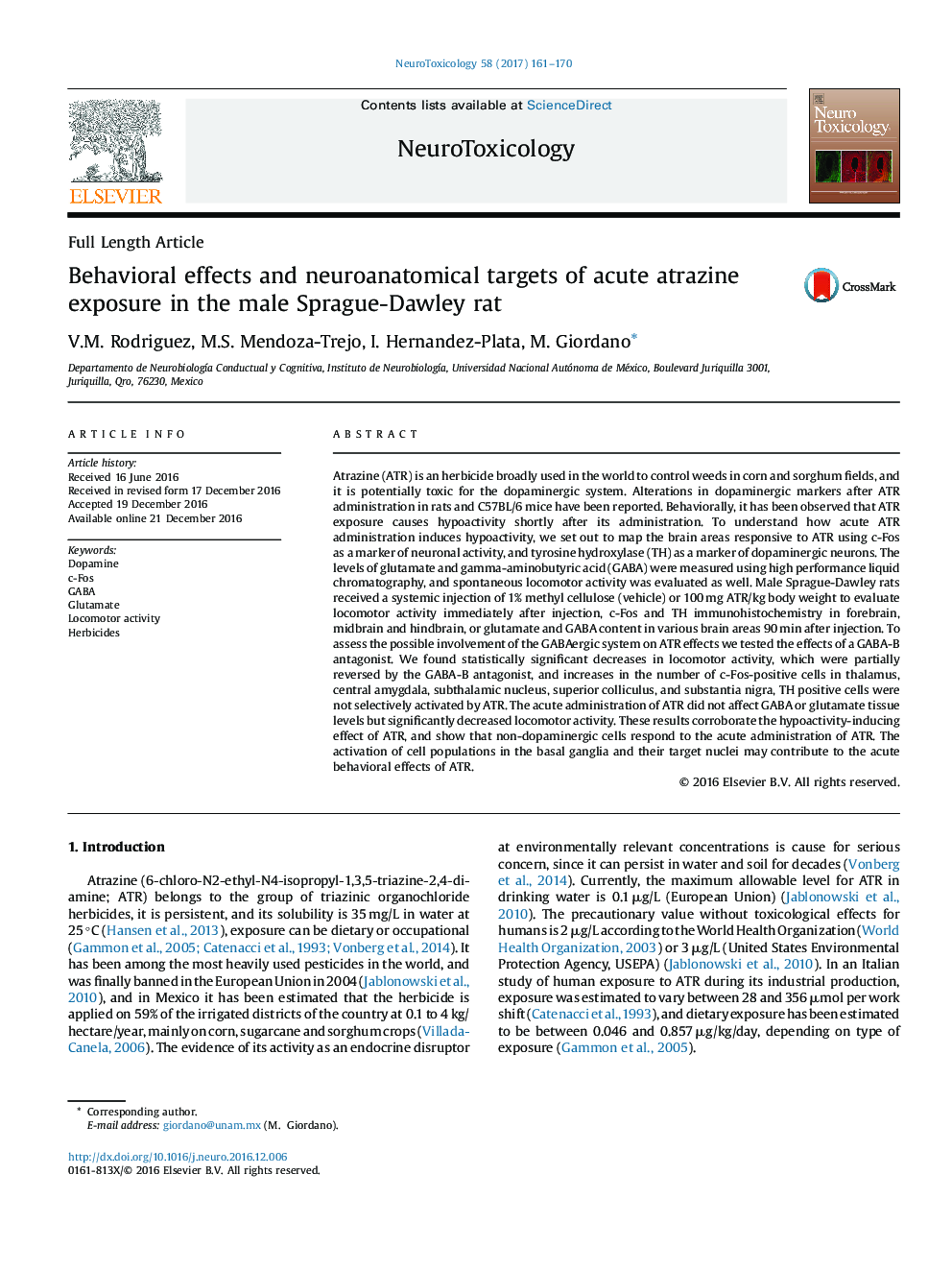| کد مقاله | کد نشریه | سال انتشار | مقاله انگلیسی | نسخه تمام متن |
|---|---|---|---|---|
| 5560877 | 1562036 | 2017 | 10 صفحه PDF | دانلود رایگان |

- Ninety minutes after exposure to ATR (100Â mg/Â kg BW) spontaneous locomotor activity is reduced.
- ATR (100Â mg/Â kg BW) increases c-Fos expression in thalamus, central amygdala, subthalamic nucleus, superior colliculus, and substantia nigra.
- Tyrosine hydroxylase- positive cells were not selectively activated by ATR.
- Acute exposure to ATR (100Â mg/Â kg BW) does not affect tissue levels of GABA or glutamate in brain regions with high levels of these transmitters.
- The effects of ATR on locomotor activity were partially reversed by a GABA-B antagonist.
Atrazine (ATR) is an herbicide broadly used in the world to control weeds in corn and sorghum fields, and it is potentially toxic for the dopaminergic system. Alterations in dopaminergic markers after ATR administration in rats and C57BL/6 mice have been reported. Behaviorally, it has been observed that ATR exposure causes hypoactivity shortly after its administration. To understand how acute ATR administration induces hypoactivity, we set out to map the brain areas responsive to ATR using c-Fos as a marker of neuronal activity, and tyrosine hydroxylase (TH) as a marker of dopaminergic neurons. The levels of glutamate and gamma-aminobutyric acid (GABA) were measured using high performance liquid chromatography, and spontaneous locomotor activity was evaluated as well. Male Sprague-Dawley rats received a systemic injection of 1% methyl cellulose (vehicle) or 100Â mg ATR/kg body weight to evaluate locomotor activity immediately after injection, c-Fos and TH immunohistochemistry in forebrain, midbrain and hindbrain, or glutamate and GABA content in various brain areas 90Â min after injection. To assess the possible involvement of the GABAergic system on ATR effects we tested the effects of a GABA-B antagonist. We found statistically significant decreases in locomotor activity, which were partially reversed by the GABA-B antagonist, and increases in the number of c-Fos-positive cells in thalamus, central amygdala, subthalamic nucleus, superior colliculus, and substantia nigra, TH positive cells were not selectively activated by ATR. The acute administration of ATR did not affect GABA or glutamate tissue levels but significantly decreased locomotor activity. These results corroborate the hypoactivity-inducing effect of ATR, and show that non-dopaminergic cells respond to the acute administration of ATR. The activation of cell populations in the basal ganglia and their target nuclei may contribute to the acute behavioral effects of ATR.
Journal: NeuroToxicology - Volume 58, January 2017, Pages 161-170